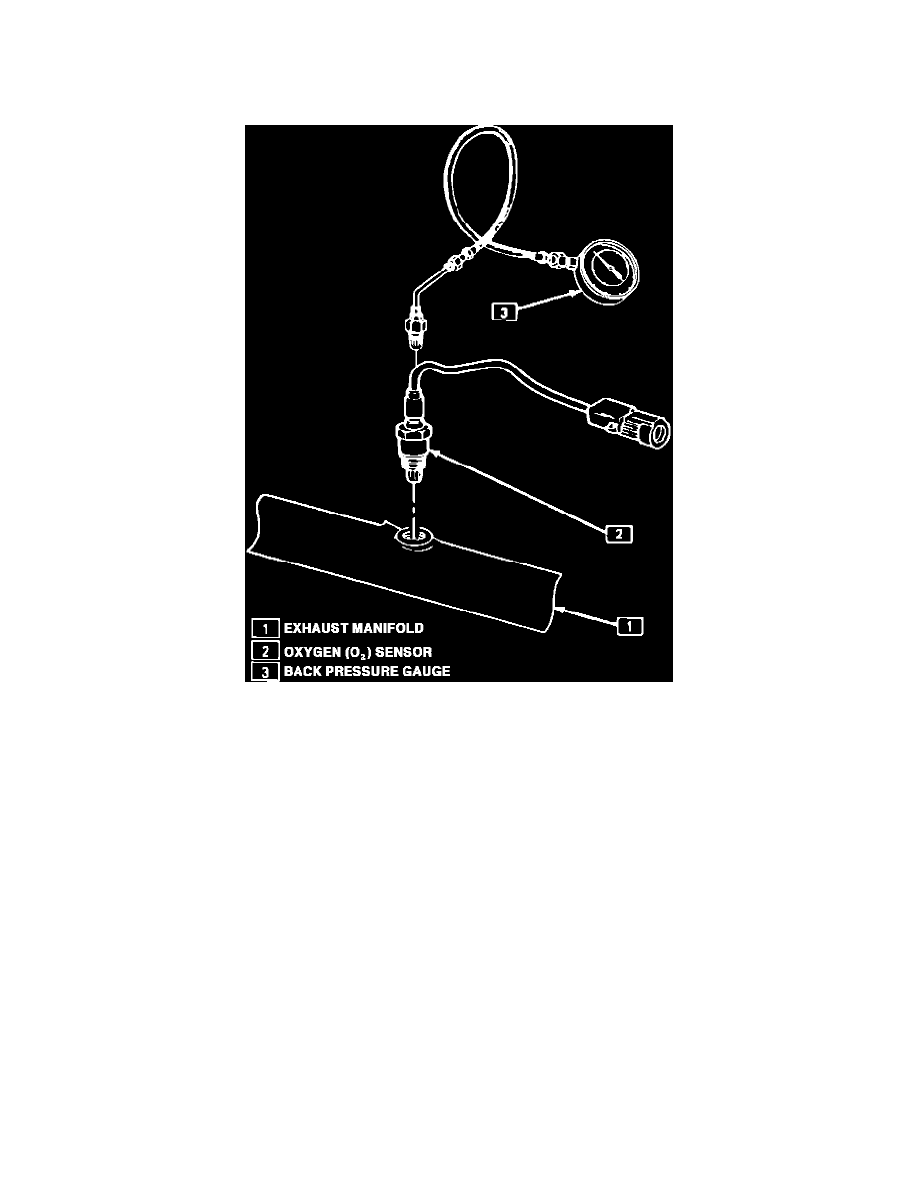Caprice RWD V8-305 5.0L (1992)

Catalytic Converter: Testing and Inspection
RESTRICTED EXHAUST TEST
Proper diagnosis for a restricted exhaust system is essential before any components are replaced. The following procedure(s) may be used for diagnosis:
Exhaust System Test at Oxygen Sensor
CHECK AT 02 SENSOR:
1.
Carefully remove O2 sensor.
2.
Install Exhaust Backpressure Tester in place of 02 sensor.
3.
After completing the diagnosis described below, be sure to coat threads of 02 sensor with anti-seize compound prior to re-installation.
DIAGNOSIS:
1.
With the engine idling at normal operating temperature, transaxle in park or neutral, observe the exhaust system backpressure reading on the
gauge. The reading should not exceed .5 psi or 3.4 kPa. Increase engine speed to 3000 rpm and observe gauge. The reading should not exceed .75
psi or 5 kPa.
2.
If the backpressure exceeds the given specifications, a restricted exhaust system is indicated.
3.
Inspect the entire exhaust system for a collapsed pipe, heat distress, or possible internal muffler failure.
4.
If there are no obvious reasons for the excessive backpressure, a restricted catalytic converter should be suspected, and replaced.
THERMAL TEST
Use a pyrometer to measure the temperature difference between the inlet and outlet. A warm and properly working catalytic converter will show about
100 degrees hotter at the outlet.
NOTE: A fuel system that is running rich will not produce a catalyst and will indicate little or no temperature variation.
